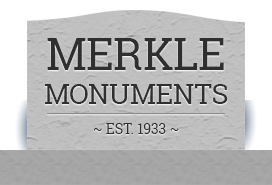Guide to Common Headstone Symbols

While headstones can be as unique as the people they’re meant to memorialize, the symbolism that’s been common to gravestones throughout the ages. But often, what a symbol means can be a little difficult to figure out, especially on older headstones.
Here are some common headstone symbols and what they mean:
- Anchor: A symbol of hope, or that the deceased worked on the sea
- Angel: A guide to heaven
- Arch: Triumphant entry into heaven, or a victory over death
- Arrow: Mortality or martyrdom
- Beehive: Abundance in heaven, piety, domestic virtue, or faith
- Bell: A symbol of religious faith
- Bird: Eternal life, spirituality, or peace
- Book: A symbol of the Bible, or the deceased’s lifetime accomplishments
- Burning flame: Eternal life or resurrection
- Butterfly: Resurrection
- Celtic cross: Faith and eternity
- Circle: Eternity, life never ending
- Clouds: A symbol of heaven
- Cross: A symbol of faith and resurrection. Many military markers, especially those from World War I, feature crosses
- Crown: Glory of life after death
- Dove: Love, purity, resurrection, or the Holy Spirit
- Eagle: Common with Civil War-era gravestones
- Finger (pointing downward): Calling the earth to witness
- Finger (pointing upward): Pathway to heaven, or that the deceased found a heavenly reward
- Fish: Symbolizes spiritual nourishment, faith, or that the deceased was a Christian
- Flower: Immortality
- Flying bird: Rebirth
- Garland: Victory over death
- Grim Reaper: Found on many early gravestones, this symbolizes the inevitability of death
- Hands (clasped): Symbol meaning farewell and the hope of meeting again in heaven
- Harp: Hope
- Heart: Love, devotion, joy, and/or mortality
- Hourglass: The swift passage of time
- Lamb: Symbolizes innocence, used often on infant or child gravestones
- Lily: Purity and/or chastity
- Myrtle leaves: Undying love and/or peace
- Oak leaves: Faith, virtue, and/or endurance
- Obelisk: Common from the 1880s to the 1930s, it symbolizes rebirth or a connection between earth and heaven
- Olive branch: Peace, forgiveness, or humanity
- Open gates: Symbol of the afterlife and the soul entering heaven
- Pyramid: Resurrection, eternal life, enlightenment, or spiritual attainment
- Rainbow: Union or fulfillment of the promise of resurrection
- Rope circle: Love, victory, triumph, and/or purity
- Scythe: Life cut short, death, or the final harvest
- Sheaf of wheat: Old age and a fruitful life
- Skull: Used in the early to mid-1880s to represent mortality and/or penitence. A winged skull meant that the deceased ascended into heaven.
- Sleeping cherub: A symbol of innocence used primarily for the gravestones of infants or children.
- Swallow: Motherhood, the spirit of children, or a symbol of consolation
- Sword: Military service
- Swords (crossed): Symbolizes that the deceased died in battle
- Tree: Life, knowledge, the fall of man through sin, or human frailty
- Tree stump: Life interrupted
- Trumpet: Announcing the resurrection of the deceased’s soul entering heaven
- Urn: Symbol for the soul, immortality, or penitence
- Wheel: Cycle of life, enlightenment, or spiritual power
- Wreath of roses: Heavenly joy and bliss
Whether you use this guide to help you select symbols for a loved one’s headstone or you’re planning to visit an historical cemetery, you’ll be better prepared to better understand what all the images you see mean.
Headstones for Maryland Cemeteries
From plain and simple headstones to intricately carved memorial markers, the team at Merkle Monuments has the talent needed to make something beautiful. We work with you to design something that memorializes the deceased while sticking to your budget. Call today for a consultation.

